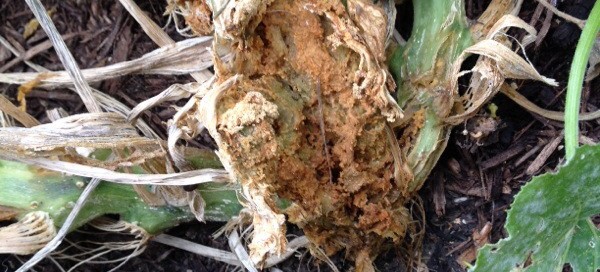Zucchini Root Rot
Root rot in zucchini is caused by soil-inhabiting pathogens within the genera Pythium and Phytophthora. Root rot is often most prevalent on zucchinis planted for a fall harvest following damp, cool weather. Plants are prone to rot when they are planted too deeply or soil around the roots remains saturated for a long time. These pathogens can survive in infected soil or contaminated debris for several years and is spread by splashing or running water or on contaminated equipment, debris or soil. Good site preparation helps to ensure excellent drainage. Deep tilling is useful for breaking through soil compaction so that soil is loose and well-drained to a depth of at least 1 to 2 feet. Planting zucchini seeds on raised mounds or hills 8 to 10 inches taller than the surrounding soil level encourages efficient drainage. Working at least 2 inches of an organic material amendment such as well-rotted compost into the soil improves drainage and fertility; compost may also contain organisms antagonistic to Phytophthora.
